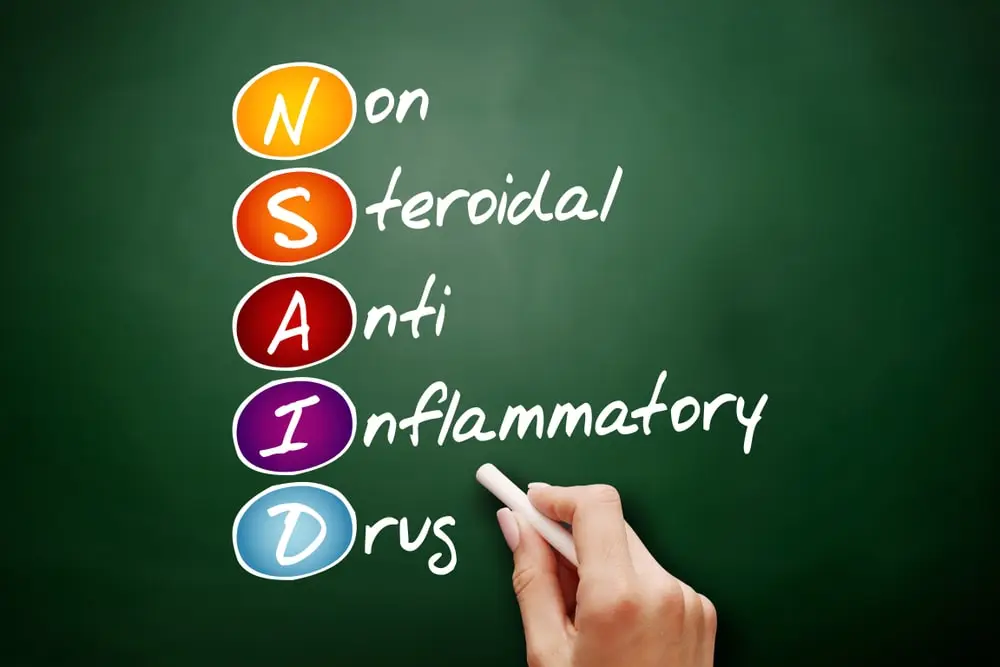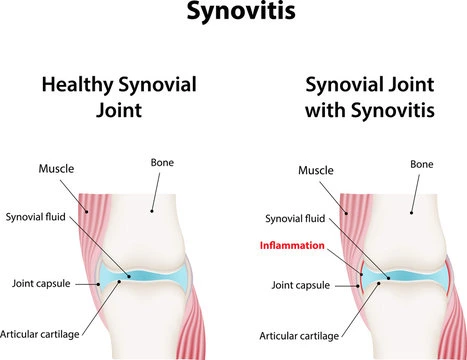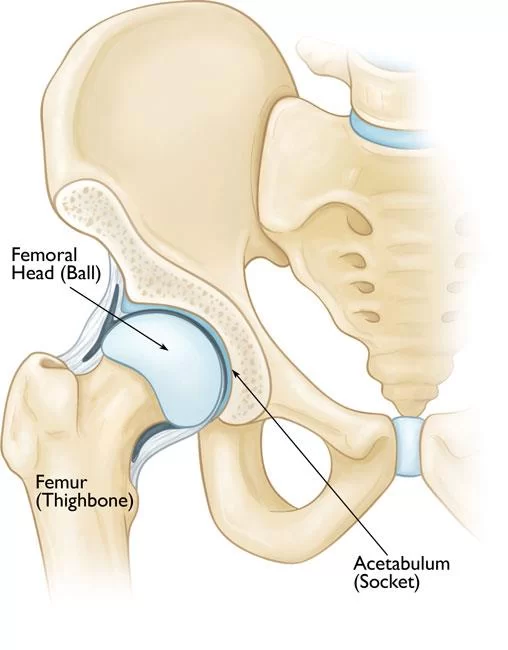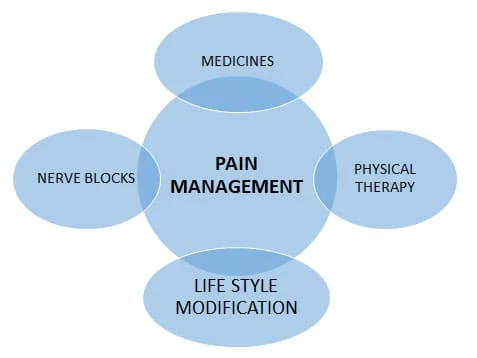Non-Steroidal Anti-Inflammatory Drugs (NSAIDs)
What are nonsteroidal anti-inflammatory drugs (NSAIDs)?
When your back hurts, headaches, your arthritis acts up or you are feeling feverish, the probabilities are you will be reaching for an NSAID (nonsteroidal anti-inflammatory drug) for relief. NSAIDs come under the wider purpose of non-opioid analgesics. Doctors generally utilize NSAIDs rather than opioid pain relievers, such as morphine, to treat less severe pain.
This category of drugs contains some of the most common pain relief drugs, such as ibuprofen and naproxen. Estimations demonstrate that about 30 million people around the world utilize NSAIDs every day. This report discusses NSAIDs in more detail, including how they work, their uses, and the precautions that individuals should take when using them.
You take a nonsteroidal anti-inflammatory drug every time you devour an aspirin, an Advil®, or an Aleve®. These drugs are common ache and fever relievers. Every day millions of people choose an NSAID to help them relieve headaches, body aches, swelling, stiffness, and fever.
You know the most common NSAIDs:
- Aspirin (available as a single ingredient known by different brand names such as Bayer® or St. Joseph® or combined with other ingredients comprehended by brand names such as Anacin®, Ascriptin®, Bufferin®, or Excedrin®).
- Ibuprofen (called by brand names such as Motrin® and Advil®).
- Naproxen sodium (called by the brand name Aleve®).
You may also get nonprescription strength, and over-the-counter NSAIDs in drug stores and supermarkets, where you may also buy less costly generic (not brand name) aspirin, ibuprofen, and naproxen sodium. Acetaminophen (Tylenol®) is not an NSAID. It is an ache reliever and fever reducer but does not have the anti-inflammatory properties of NSAIDs. Yet, acetaminophen is sometimes combined with aspirin in over-the-counter derivatives, such as some varieties of Excedrin®.
What do you use NSAIDs for?
NSAIDs are used to treat:
- The ache of rheumatoid arthritis (RA), osteoarthritis, and tendonitis.
- Muscle aches, Backaches, headaches
- Dental pain.
- Pain caused by gout.
- sprains and strains
- Bursitis.
- Menstrual cramps.
- colds and flu
- coronavirus (COVID-19)
They can also be used to decrease fever or relieve minor aches caused by the common cold.
Who can take NSAIDs
Most individuals can take nonsteroidal anti-inflammatory drugs, but some people need to be careful about taking them. It is a good idea to ask a pharmacist or doctor for guidance before taking an NSAID if you:
- are over 65 years of age
- are pregnant or trying for a baby
- are breastfeeding
- have asthma
- have had an allergic response to NSAIDs in the past
- have had stomach ulcers in the past
- have any difficulties with your heart, liver, kidneys, blood pressure, circulation, or bowels
- are taking other medicines
- are examining for medicine for a child under 16 (do not give any medicine that contains aspirin to children under 16)
NSAIDs might not necessarily need to be avoided in these cases, but they should only be utilized on the advice of a healthcare professional as there may be a higher risk of side effects. If NSAIDs are not suitable, your pharmacist or doctor may guide alternatives to NSAIDs, such as paracetamol.
Classification of NSAIDs
NSAIDs may be classified based on their chemical structure or mechanism of action. Older nonsteroidal anti-inflammatory drug were known before their mechanism of action was elucidated and were for this reason classified by chemical structure or origin. Newer implications are more often classified by mechanism of action.
Salicylates
- Aspirin (acetylsalicylic acid)
- Diflunisal (Dolobid)
- Salicylic acid and its salts
- Salsalate (Disalcid)
Propionic acid derivatives
- Ibuprofen
- Dexibuprofen
- Naproxen
- Fenoprofen
- Ketoprofen
- Dexketoprofen
- Flurbiprofen
- Oxaprozin
- Loxoprofen
- Pelubiprofen
- Zaltoprofen
Acetic acid derivatives
- Indomethacin
- Tolmetin
- Sulindac
- Etodolac
- Ketorolac
- Diclofenac
- Aceclofenac
- Bromfenac
- Nabumetone (the drug itself is non-acidic but the active, principal metabolite has a carboxylic acid group)
Enolic acid (Oxicam) derivatives
- Piroxicam
- Meloxicam
- Tenoxicam
- Droxicam
- Lornoxicam
- Isoxicam (withdrawn from the market in 1985)
- Phenylbutazone (Bute)
Anthranilic acid derivatives (Fenamates)
The following NSAIDs are derived from fenamic acid. which is a different form of anthranilic acid, which in turn is a nitrogen isostere of salicylic acid, which is the active metabolite of aspirin.
- Mefenamic acid
- Meclofenamic acid
- Flufenamic acid
- Tolfenamic acid
Selective COX-2 inhibitors (Coxibs)
- Celecoxib (FDA alert)
- Rofecoxib (withdrawn from the market)
- Valdecoxib (withdrawn from the market)
- Parecoxib FDA withdrawn, licensed in the EU
- Lumiracoxib TGA canceled the registration
- Etoricoxib is not FDA approved, licensed in the EU
- Firocoxib used in dogs and horses
Sulfonanilides
- Nimesulide (systemic preparations are banned by various countries for the potential risk of hepatotoxicity)
Others
- Clonixin
- Licofelone acts by inhibiting LOX (lipooxygenase) and COX and is hence known as a 5-LOX or COX inhibitor
- H-harpagide in figwort or devil’s claw
NSAIDs are obtainable as tablets, capsules, suppositories (capsules inserted into the bottom), creams, gels, and injections. Some may be bought over the counter from pharmacies, while others need a prescription.
The main types of NSAIDs include:
- ibuprofen
- naproxen
- diclofenac
- celecoxib
- mefenamic acid
- etoricoxib
- indomethacin
- aspirin for pain relief (low-dose aspirin is not normally considered to be an NSAID)
NSAIDs may also be sold or prescribed under these names or a brand name. They are all similarly effective, although you may find a distinct one that works best for you.
Continuing Education Activity About NSAIDs
NSAIDs are a type of medication used to treat pain, fever, and other inflammatory processes. This activity represents the indications, mechanism of action, administration, adverse effects, contraindications, monitoring, and important points for providers considering nonsteroidal anti-inflammatory drugs.
Objectives:
- Identify the mechanism of action of NSAIDs.
- Describe the potential adverse effects of NSAIDs.
- Review the potential toxicity of NSAIDs.
- Summarize interprofessional team strategies for enhancing care and outcomes when using NSAID therapy.
Mechanism of Action
The major mechanism of motion of nonsteroidal anti-inflammatory drugs is the inhibition of the enzyme cyclooxygenase (COX). Cyclooxygenase is required to change arachidonic acid into thromboxanes, prostaglandins, and prostacyclins. The therapeutic effects of NSAIDs are attributed to the scarcity of these eicosanoids. Especially, thromboxanes play a role in platelet adhesion, prostaglandins cause vasodilation, improve the temperature set-point in the hypothalamus, and play a role in anti-nociception.
There are two cyclooxygenase isoenzymes, COX-1 and COX-2. COX-1 gets constitutively represented in the body, and it plays a role in sustaining gastrointestinal mucosa lining, kidney function, and platelet aggregation. COX-2 is not constitutively expressed in the body; instead, it inducibly expresses during an inflammatory reaction. Most nonsteroidal anti-inflammatory drugs are nonselective and inhibit both COX-1 and/or COX-2. Yet, COX-2 selective NSAIDs (ex. celecoxib) only target COX-2 and therefore have a distinct side effect profile. Importantly, because COX-1 is the prime mediator for providing gastric mucosal integrity and COX-2 is mainly involved in inflammation, COX-2 selective NSAIDs should deliver anti-inflammatory relief without compromising the gastric mucosa.
Function of NSAIDs
NSAIDs are a wide group of non-opioid analgesic drugs. Although their chemical structures are different, they have several effects on every day:
- reducing high temperature and fever
- decreasing inflammation
- relieving pain
NSAIDs block the presentation of specific body chemicals that cause inflammation. NSAIDs are good at treating pain induced by slow tissue damage, such as arthritis pain. Nonsteroidal anti-inflammatory drugs may also work well in fighting back pain, menstrual cramps, and headaches. nonsteroidal anti-inflammatory drug work like corticosteroids (also called steroids), without the multiple side effects of steroids. Steroids are man-made drugs that are identical to cortisone, a naturally-occurring hormone. nonsteroidal anti-inflammatory drugs work by slowing the appearance of prostaglandins, which play an important role in the body’s inflammatory response. The body, therefore, delivers more of these substances when an injury occurs. Decreasing the number of prostaglandins at the site of damaged tissue lowers inflammation.
NSAIDs also block an enzyme called cyclooxygenase (COX), which sustains the reactions that produce prostaglandins. By blocking COX, NSAIDs interrupt the function of platelets — cells in the blood that play a vital role in blood clotting. As a result, these medications have anti-clotting effects. In the case of aspirin, this property may assist prevent blocked arteries that can also cause a heart attack or stroke. COX-2 inhibitors are a special type of nonsteroidal anti-inflammatory drug. These drugs target only the COX-2 enzyme that promotes the inflammatory response. Because they do not block the efforts of the COX-1 enzyme, these medicines generally do not generate the kind of stomach upset or bleeding that traditional NSAIDs do. COX-2 inhibitors also do not offer an identical kind of protection against heart disease.
If you are taking a COX-2 inhibitor, you should not utilize a traditional NSAID (prescription or over-the-counter). Be confident to tell your doctor if you have had a heart attack, stroke, angina, blood clot, or hypertension or if you are exposed to aspirin, sulfa drugs, or other nonsteroidal anti-inflammatory drugs. COX-2 inhibitors are not without side effects, which may also include abdominal pain, nausea, and indigestion. Antacids or fatty meals may modify the body’s ability to absorb and use COX-2 inhibitors, so do not take them together. In occasional cases, unbearable side effects including abdominal bleeding may occur without warning.
Pharmacological actions of NSAIDs
Analgesic effect:
The analgesic effect by:
- Peripheral inhibition of prostaglandin production.
- This may also be due to the inhibition of discomfort stimuli at a subcortical area.
- It also inhibits the pain-sensitizing mechanism affected by TNFα and Bradykinin.
- Prevent the potentiating activity of prostaglandins on endogenous mediators of peripheral nerve stimulation.
- Aspirin is a more vulnerable analgesic than morphine-type drugs.
- Effectively decreases inflammation, tissue injury, connective tissue, and integumental pain, but is moderately ineffective in severe visceral and ischaemic pain.
- No sedation, subjective effects, tolerance, and/or physical dependence.
Antipyretic effect:
- Inhibition of the production of prostaglandins caused by interleukin-1 (IL-1) and interleukin-6 (IL-6) in the hypothalamus.
- “Resetting” of the thermoregulatory system, conducting vasodilatation and increased heat loss.
Anti-inflammatory effect:
- Due to the inhibition of the enzymes that creates prostaglandin (cyclooxygenase, or COX), which converts arachidonic acid to prostaglandins, and TxA2 and prostacyclin.
- Inhibits accumulation of fluids.
- Reduced capillary permeability.
- Reduced exudation of fluid.
- Reduced tissue swelling.
- Resulting in an anti-inflammatory effect.
Metabolic and Endocrine effects:
- Significant only at anti-inflammatory doses (High dose).
- Cellular metabolism is improved, especially in skeletal muscles, due to the uncoupling of oxidative phosphorylation.
- Increased utilization of glucose blood sugar may reduce and liver glycogen is depleted.
- Chronic use of large doses causes negative N2 balance by increased conversion of protein to carbohydrate.
- Plasma-free fatty acid and cholesterol levels are decreased.
- It stimulates the adrenal medulla and improves adrenaline secretion which intern produced hypoglycemia.
Respiratory System:
- Effects are dose-dependent.
- It raised the consumption of oxygen by skeletal muscles and improved the production of carbon dioxide.
- It stimulates medullar respiratory centers so resulting in an improved rate of respiration.
- At anti-inflammatory doses, respiration is produced by peripheral (increased CO2 production) and central (increased sensitivity of respiratory center to CO2) actions.
- Hyperventilation is prominent in salicylate poisoning.
- Additionally rise in salicylate levels causes respiratory depression; death is due to respiratory failure.
Acid-base and Electrolyte Balance:
- Aspirin has no direct impact on therapeutic doses.
- Larger doses improve cardiac output to meet increased peripheral O2 demand and cause direct vasodilatation.
- Toxic doses depress the vasomotor center: BP may fall.
- Because of increased cardiac work as well as Na+ and water retention, CHF may also be precipitated.
- Decreased prothrombin levels and inhibits platelet aggregation.
Blood:
- Aspirin irreversibly interferes with TxA2 synthesis by platelets, bleeding time is prolonged to twice.
- Long-term intake of huge doses decreases the synthesis of clotting factors in the liver and predisposes to bleeding; can be prevented by prophylactic Vit. K therapy.
GIT:
- Aspirin and fired salicylic acid irritate gastric mucosa, and cause epigastric distress, nausea, and vomiting.
- It also stimulates CTZ.
- Prolonged usage may also lead to ulcer formation as it inhibits PGE2, and PGF2α synthesis, which intern inhibits gastric mucosa production.
Kidney:
- It inhibits PGE2, PGF2α results in decreased glomerular filtration and decreased urine outputs.
- It also enhances Na+ and Water retention, which leads to raised BP and edema formation.
Local Action:
- It produced fungistatic, keratolytic, and antiseptic action.
- It caused irritation of GIT which conducts to nausea and vomiting.
Pharmacokinetics:
- Absorbed from the stomach and small intestines.
- Poor water solubility is the limiting element in absorption: micro fining the drug particles and inclusion of an alkali enhances absorption.
- 50-60% binds to plasma protein.
- Rapidly deacetylated in the gut wall, liver, plasma, and other tissues to discharge salicylic acid which is the major circulating and active form.
- Slowly penetrates the brain but freely crosses the placenta.
- The metabolites are excreted by glomerular filtration as nicely as tubular secretion.
Therapeutic uses:
- Analgesic.
- Antipyretic.
- Acute rheumatic fever.
- Rheumatoid arthritis.
- As antiplatelet agents.
- Local application for Fungistatics, Antiseptics, and Keratolytics.
Adverse effects:
- GIT – Nausea, vomiting, Diarrhoea, Ulceration, perforation, and/or hemorrhage.
- Discrimination – Skin rashes, urticaria, pruritis, bronchial asthma, anaphylactic shock.
- Bone marrow sorrow – Agranulocytosis, Thrombocytopenia, Aplastic anemia.
Precautions to be taken while using aspirin:
- It should not be taken on a vacant stomach.
- Patients suffering from ulceration.
- During delivery as it increases bleeding time.
- Allergic or sensitive to salicylates.
Salicylism:
- Headache, Tinnitus, Giddiness, problems in hearing, Mental confusion, vomiting, diarrhea, and respiratory alkalosis.
Acute Poisoning:
- Hyperglycemia, acidosis, dehydration, GIT nuisance, hemorrhage, restlessness, excitement, delirium, tremors, euphoria, convulsion, and/or hallucination.
Treatment of pharmacological actions
- Gastric lavage.
- Correction of dehydration, acid-base balance.
- Administration of alkalies and fluids (0.9% saline with 2% NaHCO3) contains metabolic acidosis and increased excretion of salicylates.
How long should I use an over-the-counter NSAID?
- Do not utilize an over-the-counter NSAID continuously for more than three days for fever, and 10 days for pain, unless your doctor says it is okay. Over-the-counter nonsteroidal anti-inflammatory drugs work well in reducing pain, but they are meant for short-term use.
- If your doctor clears you to take nonsteroidal anti-inflammatory drugs for a long period, you and your doctor must watch for harmful side effects. If you detect bad side effects your treatment may require to be changed.
How long do NSAIDs take to work?
That depends on the NSAID and the condition being treated. Some NSAIDs may work within a few hours, while others may also take a week or two. Typically, for acute (sharp sudden pain) muscle injuries, we recommend nonsteroidal anti-inflammatory drugs that work quickly. Although, these may need to be taken as often as every four to six hours because of their short action time. For osteoarthritis and rheumatoid arthritis that need long-term treatment, doctors usually suggest NSAIDs that are taken only once or twice a day. Yet, it generally takes longer for these drugs to have a therapeutic (healing) effect.
How are NSAIDs prescribed?
NSAIDs are defined in various doses, depending on the condition. These drugs may require to be taken from one to four times a day. Do not improve the dose without asking your doctor first. You may be prescribed higher doses of NSAIDs if you have rheumatoid arthritis (RA), for instance. RA often causes a considerable degree of heat, swelling and redness, and stiffness in the joints. Lower doses may be prescribed for osteoarthritis and acute muscle injuries since there is typically less swelling and frequently no warmth or redness in the joints. No single NSAID is guaranteed to work. You and your doctor may require to try out several kinds of nonsteroidal anti-inflammatory drugs to find the right one for you.
When are stronger NSAIDs prescribed?
Prescription-strength NSAIDs are frequently recommended for rheumatologic diseases, including rheumatoid arthritis and moderate-to-severe osteoarthritis. These nonsteroidal anti-inflammatory drugs are also prescribed for relatively painful musculoskeletal conditions such as back pain.
What are some prescription NSAIDs?
Here are a few measures of prescription NSAIDs. Some nonsteroidal anti-inflammatory drugs are only obtainable as generic formulations (no brand names).
Generic names or common brand names
- Celecoxib (Celebrex®).
- Diclofenac (Voltaren® [available by brand name in topical arrangement]).
- Fenoprofen (Nalfon®).
- Indomethacin (Indocin® [available by brand name in the liquid state]).
- Ketorolac tromethamine (Toradol®).
Generic names (no brands)
- Meclofenamate sodium.
- Diflunisal.
- Tolmetin.
- Ketoprofen.
- Flurbiprofen.
How does my doctor choose an NSAID that’s good for me?
In organizing your therapy, your doctor looks at the effectiveness and the dangers of these drugs. Your medical history, physical exam, X-rays, blood tests, and the presence of other medical conditions all play a part in deciding which NSAIDs will work for you. After you start your NSAID program complete with your doctor regularly to review for any harmful side effects and, if necessary, make any changes. Blood tests or other tests (containing a kidney function test) may need to be done for this part of your treatment.
What are the common side effects of NSAIDs?
You may have side effects if you take enormous doses of NSAIDs, or if you take them for a long time. A few side effects are gentle and go away, while others are more serious and require medical attention. Unless your doctor tells you to do so, do not take an over-the-counter NSAID with a medication NSAID, multiple over-the-counter NSAIDs, or more than the recommended dose of an NSAID.
Doing so could improve your risk of side effects. The side effects listed below are the most familiar, but there may be others. Request your doctor if you have queries about your specific medication. The most frequently reported side effects of nonsteroidal anti-inflammatory drugs are gastrointestinal (stomach and gut) symptoms, such as Gas, Feeling bloated, Heartburn, Stomach pain, Nausea, Vomiting, Diarrhea, and/or constipation.
These gastrointestinal symptoms can also generally be prevented by taking the drug with food, milk, or antacids (such as Maalox® or Mylanta®). Contact your doctor if these symptoms stay for more than a few days even if you are taking the NSAID with food, milk, or an antacid. The NSAID may require to be stopped and changed. If you have any of these side effects, it is important to contact your doctor right away:
Gastrointestinal/urinary
- Black stools – bloody and/or black, tarry stools.
- Bloody or cloudy urine.
- Severe stomach pain.
- Blood or material that peeks like coffee grounds in vomit (bleeding may occur without warning symptoms like pain).
- Incapability to pass urine, or change in how much urine is passed.
- Unusual weight gain.
- Jaundice.
Head (vision, hearing, etc.)
- Blurred vision.
- Ringing in the ears.
- Photosensitivity (greater sensitivity to light).
- Very bad headache.
- Change in strength on one side is more significant than the other, as trouble speaking or thinking, a change in balance.
Possible allergic reactions and other problems
- Fluid retention (determined by swelling of the mouth, face, lips, or tongue, around the ankles, feet, lower legs, hands, and possibly around the eyes).
- Extreme rash or hives or red, peeling skin
- Itching
- Unexplained bruising and bleeding
- Wheezing, trouble breathing, or unusual cough
- Chest pain, rapid heartbeat, palpitations
- Acute fatigue, flu-like symptoms
- Very bad back pain
- Feeling very tired and weak
Other side effects of NSAIDs include:
- Dizziness
- Feeling lightheaded.
- Problems with balance.
- Difficulty concentrating.
- Mild headaches.
If these presentations go on for more than a few days, stop taking the NSAID and call your doctor.
Toxicity – NSAID toxicity can also manifest as GI bleeding, hypertension, hepatotoxicity, and renal damage. Normally, acute NSAID overdose is asymptomatic or has minor gastrointestinal symptoms. Yet, other symptoms of toxicity complications may contain anion gap metabolic acidosis, coma, convulsions, and acute renal failure. nonsteroidal anti-inflammatory drugs can also consult gastrointestinal damage by inhibiting COX-1, which causes a reduction in gastric mucosa production. Nephrotoxicity may also occur with NSAID use because these medications decrease prostaglandin levels, which are essential for the vasodilation of the renal arterioles. Lastly, neurologic toxicity may also present with drowsiness, confusion, nystagmus, blurred vision, diplopia, headache, and tinnitus.
Are there specific warnings associated with NSAID use?
The Food and Drug Administration demands that the labeling of nonsteroidal anti-inflammatory drugs contain these specific warnings:
These warnings are for non-aspirin NSAIDs:
- Non-aspirin NSAIDs can also raise the chance of heart attack or stroke. This threat may be greater if you have heart disease or risk factors (for instance, smoking, high blood pressure, high cholesterol, diabetes) for heart disease. However, the risk may also be increased in individuals who do not have heart disease or those risk factors. This risk can happen early in treatment and may increase with longer use.
- Heart problems induced by non-aspirin nonsteroidal anti-inflammatory drugs can happen within the first weeks of use and may happen more frequently with higher doses or with long-term use.
- Non-aspirin NSAIDs should not be employed right before or after heart bypass surgery.
This alert is for all NSAIDs including aspirin:
NSAIDs may improve the chance of serious stomach and bowel side effects like ulcers and bleeding. These side effects can also happen without warning signs. This risk may be greater in individuals who:
- Are older.
- Have a prior history of stomach ulcers or bleeding problems.
- Are on blood thinners.
- Are on multiple prescription or over-the-counter NSAIDs.
- Drink three or more alcoholic beverages per day.
Interactions with other medicines
A few NSAIDs can respond unpredictably to other medicines. This can also influence how well either medicine works and increase the risk of side effects.
It is particularly important to get a medical recommendation before taking an NSAID if you are already taking:
- another NSAID
- low-dose aspirin or warfarin – medicines employed to prevent blood clots
- ciclosporin – a medicine utilized to treat autoimmune conditions, such as arthritis or ulcerative colitis
- diuretics – medicines sometimes utilized to treat high blood pressure
- lithium – a medicine utilized to treat mental health problems, including bipolar disorder and severe depression
- methotrexate – a medicine employed to treat inflammatory conditions such as rheumatoid arthritis
- a type of antidepressant medicine named a selective serotonin reuptake inhibitor (SSRI) – examples of SSRIs are citalopram and fluoxetine (Prozac)
If you are not sure whether a medicine you are taking is secure to take at the same time as an NSAID, check the leaflet that comes with it, or ask a pharmacist or doctor for guidance.
Alternatives to NSAIDs
As NSAIDs can cause troublesome side effects, choices are often recommended first. The main alternative for pain alleviation is paracetamol, which is available over the counter and is safe for most individuals to take. Nonsteroidal anti-inflammatory drug creams and gels that you scratch into your skin may be worth trying first if you have muscle or joint pain in a special part of your body, as they manage to have fewer side effects than tablets or capsules. Your doctor may also be able to suggest different medicines and therapies depending on the health problem you have. For instance, physiotherapy may benefit some individuals with muscle or joint pain.
Treatment Applications
- NSAIDs are frequently utilized to feast inflammatory conditions such as arthritis, bursitis, and tendinitis. NSAIDs are relatively inexpensive and are frequently the foremost line of medication used to relieve pain and reduce inflammation.
- Very low doses of nonsteroidal anti-inflammatory drugs may also be prescribed for individuals with cardiac disease.
- COX-2 inhibitors are more costly than traditional NSAIDs. They are frequently prescribed for long-term conditions such as arthritis because they may be safer for the stomach. Yet, some studies have not shown any discrepancy between the incidence of gastrointestinal side effects from traditional NSAIDs and COX-2 inhibitors.
- Recent investigations have indicated that both NSAIDs and COX-2 inhibitors may have a delaying effect on bone healing, but the scope of this effect is not yet known. Short-term usage of nonsteroidal anti-inflammatory drugs after a fracture or orthopedic surgery is generally safe.
Can I bring NSAIDs if I’m being treated for high blood pressure?
Nonsteroidal anti-inflammatory drugs may also induce high blood pressure (hypertension) in some people. You may have to stop taking NSAIDs if your blood pressure increases even if you are taking your blood pressure medications and following your diet. Examine your doctor concerning this before you start taking NSAIDs.
In what circumstances should I check with my doctor before taking NSAIDs?
If you have any of the subsequent conditions or circumstances please check with your doctor before you take NSAIDs:
- Pregnancy (NSAIDs must be avoided in the third trimester. Confer with your provider about use in the first or second trimester).
- Children and teenagers with viral infections (with or without fever) should not acquire aspirin or aspirin-containing products due to the chance of Reye’s syndrome (a rare but deadly illness that can affect the brain and liver).
- Those who have an upcoming surgical method, including dental surgery.
- Individuals who have three or more alcoholic beverages per day.
- Asthma gets worse when taking aspirin.
- If you are 65 years of age or aged.
Disease states
- Diabetes is difficult to control.
- Known kidney disease.
- Known liver disease.
- Gastroesophageal reflux disease, also known as GERD.
- Crohn’s disease or ulcerative colitis.
- Active peptic ulcer disease (stomach ulcers or earlier history of stomach ulcer bleeding).
Heart and bleeding conditions
- Bleeding issues (individuals who have a history of prolonged bleeding time or who bruise easily).
- High blood pressure is difficult to control.
- Active congestive heart failure.
- History of stroke or heart attack.
Allergic and drug interactions
- Known allergies to medicines, especially aspirin, other NSAIDs, and sulfa drugs.
- Nasal polyps (connected to a greater chance of NSAID allergy).
- Please review with your pharmacist or healthcare provider before starting an NSAID to decide if your current medications, both prescription and OTC, and also your dietary or herbal supplements, are consistent with the NSAID. Do this especially if you are on warfarin (Coumadin®), clopidogrel (Plavix®), corticosteroids (for instance, prednisone), phenytoin (Dilantin®), cyclosporine (Neoral®, Sandimmune®), probenecid and lithium (Lithobid®).
- If you take diuretics (also comprehended as water pills) to control your blood pressure, you may be at greater risk of kidney problems if you take an NSAID.
- Phenylketonuria (PKU). Some nonprescription NSAIDs are sweetened with aspartame, the origin of phenylalanine.
Can NSAIDs cause allergic reactions?
Seldom, an nonsteroidal anti-inflammatory drug can also cause a generalized allergic reaction known as anaphylactic shock. If this ensues, it usually happens soon after the individual starts taking the NSAID. The symptoms of this reaction include:
- Swollen eyes, lips, or tongue.
- Difficulty swallowing.
- Shortness of breath.
- Rapid heart rate.
- Chest pain or tightness.
If any of these symptoms occur, call an ambulance or have someone drive you to the nearest emergency room immediately. Recognize, before any medication is prescribed, tell your doctor:
- If you are allergic to any medications, foods, or other implications.
- If you presently take any other medications (including over-the-counter medications) and/or herbal or dietary supplements.
- If you are pregnant, intending to evolve pregnantly, or are breastfeeding.
- If you have problems taking any medications.
- If you have anemia, kidney or liver disease, stomach or peptic ulcers, heart disorder, high blood pressure, bleeding or clotting problems, asthma, or growth in the nose (nasal polyps).
Enhancing Healthcare Team Outcomes
The general public widely employs NSAIDs because of their wide range of commonly encountered indications. Patient education on the benefit of NSAIDs is an important piece of care that providers need to pay attention to because of the many possible adverse effects on multiple different organ systems. Because these adverse effects occur at a much more increased rate in patients with specific comorbidities, it is crucial for physicians, nurses, and pharmacists to pay close attention to a patient’s history and to apprise the patient accordingly on risks and dosing. The treating clinician will prompt therapy, whether for a short or long-term regimen. The pharmacist will require to confirm the dosing and administration and check for probable drug-drug interactions.
Pharmacists should also provide patient counseling on how to best use their nonsteroidal anti-inflammatory drugs and underestimate adverse events; this is particularly the case when the patient uses NSAIDs as an OTC agent. Nursing must also take a thorough medication history and contain OTC NSAID use, so the clinician may also make an informed choice for prescribing NSAID therapy. MUrses, pharmacists, and clinicians all need to be mindful of the signs and symptoms of nonsteroidal anti-inflammatory drug toxicity or negative effects to make changes to the patient’s regimen as needed.
The healthcare team should intercommunicate and work together to ensure that each patient receives the proper dose for their specific condition and comorbidities, elevated enough for efficacy but as low as possible to decrease the incidence of adverse effects. Through collaborative interprofessional teamwork, nonsteroidal anti-inflammatory drug therapy can also confer maximum usefulness with minimal downside.
Precautions to take when using NSAIDs
Individuals thinking about taking NSAIDs may wish to regard a few precautions. For example, it is best to limit or avoid alcohol while utilizing nonsteroidal anti-inflammatory drugs, as this combination of drugs can also irritate the gut and increase the risk of internal stomach bleeding. It is also significant not to mix more than one kind of nonsteroidal anti-inflammatory drug and to tell a doctor before combining an NSAID with any other medicine, as this may sometimes cause some adverse effects.
Other individuals who may require to avoid these drugs or take them with medical guidance contain those who:
- have an allergy to NSAIDs
- have asthma, as NSAIDs may also worsen the symptoms of this condition in some cases
- are pregnant or breastfeeding
- have heart disease
Summary
Nonsteroidal anti-inflammatory drugs are non-opioid analgesic medications that individuals primarily use to treat mild symptoms of pain throughout the body. Individuals can get OTC versions or get a prescription from a doctor for stronger pain relievers. Many individuals take nonsteroidal anti-inflammatory drugs on an as-needed basis to treat mild conditions, such as headaches, fever from cold or flu, or period cramps. Yet, people may wish to take certain precautions to reduce the risk of side effects. For example, it is advisable to evade alcohol and other medications when taking nonsteroidal anti-inflammatory drugs. Individuals with risk factors for some health conditions and those who require to take other medications should speak with a doctor before taking NSAIDs.
FAQ
Who should avoid NSAIDs?
NSAIDs are generally not advised for individuals with kidney disease, heart failure, or cirrhosis, or for people who take diuretics. A few patients who are allergic to aspirin may be able to take selective NSAIDs safely, although this should be discussed in advance with a healthcare provider.
Which NSAID is best for inflammation?
Ibuprofen (Advil, Motrin) and Naproxen (Aleve).
The multiple commons of non-steroidal anti-inflammatory drugs (NSAIDs), ibuprofen, or naproxen inhibit the chemicals that induce inflammation in the body. It is the pick for things like sinus infections, arthritis, earaches, and toothaches.
How harmful are NSAIDs?
Nonsteroidal anti-inflammatory drugs (NSAIDs) — medications commonly utilized to treat pain and inflammation — can increase the risk of a heart attack and stroke. This increase in risk affects individuals who already have heart disease and those who don’t. Yet, the risk is greater in those who have heart disease.
Which NSAID is safest?
Among traditional nonselective NSAIDs, diclofenac conveys the greatest cardiovascular risk. In distinction, naproxen seems to have the safest cardiovascular profile and is the best therapy option in patients with high cardiovascular risk.
What are some good NSAIDs?
NSAIDs such as aspirin, ibuprofen (Advil, Motrin), and naproxen (Aleve, Anaprox) may be more useful than acetaminophen for certain conditions because they decrease inflammation as well as relieve pain.
What is the safest NSAID for the elderly?
confirmed these findings when they examined elderly patients on low-dose aspirin. They discovered that celecoxib has a superior GI safety profile, compared with non-selective NSAIDs
What is the first drug of choice for NSAID therapy?
If a patient is possible to assist with NSAID treatment naproxen or ibuprofen are advised first-line, at the lowest effective dose, for the shortest possible time.
Which NSAID is safest for blood pressure?
Aspirin does not elevate blood pressure. Among nonselective NSAIDs, ibuprofen improves the risk of hypertension and stroke. Diclofenac does not raise the risk of hypertension but does increase the risk of stroke. Naproxen (Naprosyn) does not improve the risk of hypertension or stroke.
Is it OK to take NSAIDs every day?
But like any drug, it should be employed sparingly and only in the short term. This varies for all other types of drugs in the NSAID (non-steroidal anti-inflammatory drug) category, including other OTC medicines such as naproxen as well as medicine NSAIDs such as diclofenac sodium.
What is avoiding NSAIDs?
Non-Steroidal Anti-Inflammatory Drugs. (NSAIDs) to Avoid. Contributors should not take non-steroidal anti-inflammatory drugs (NSAIDS). Tylenol is the only over-the-counter pain reliever that should be utilized post-donation. This is an alphabetical list of common NSAIDS to detour.








53 Comments